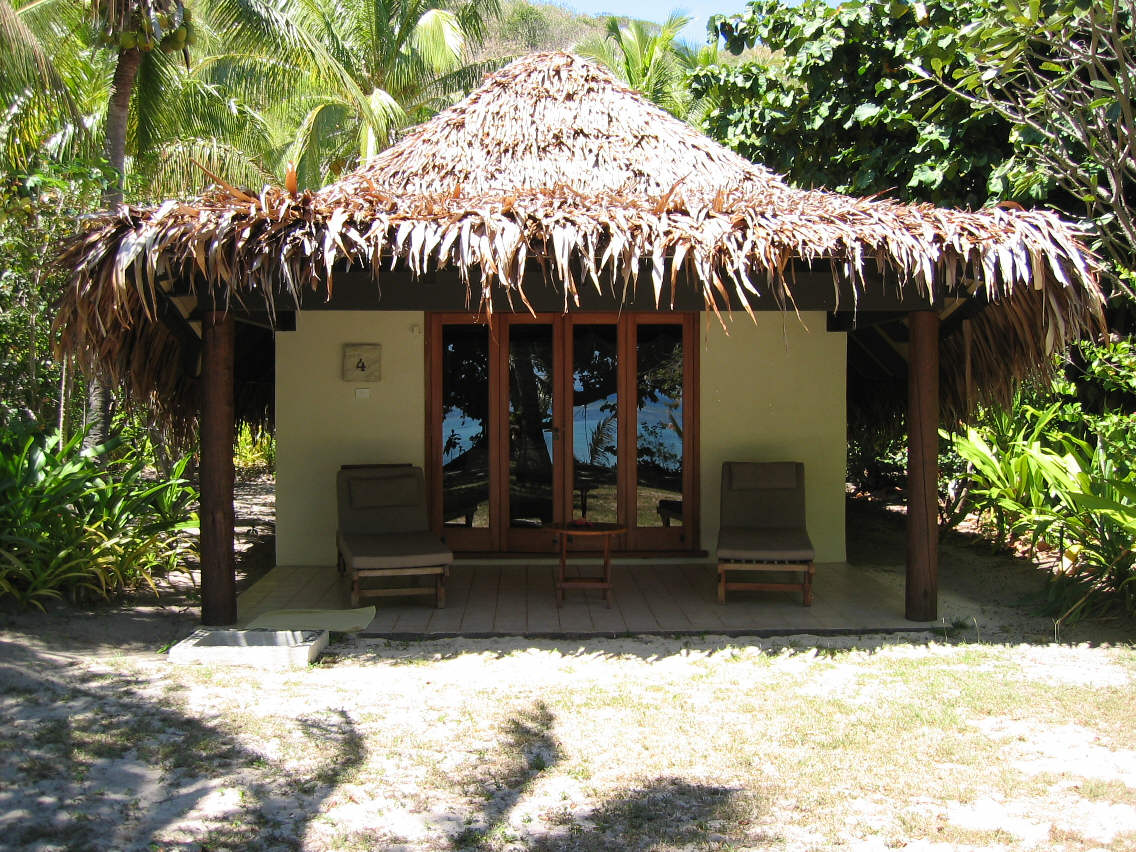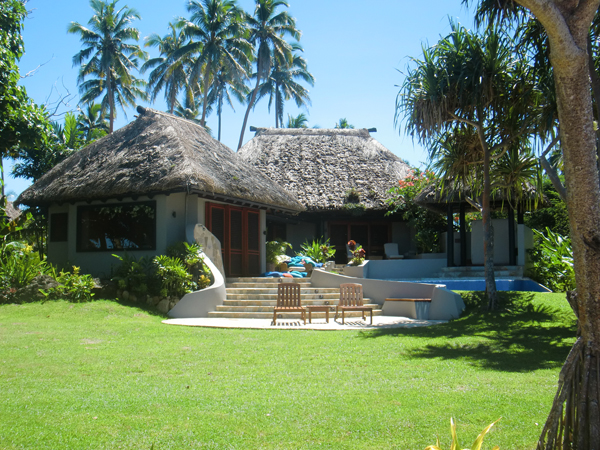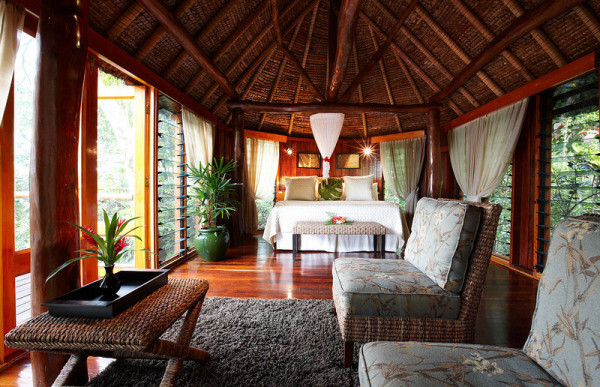I (Christina) recently got back from a trip to Vanua Levu, Fiji and got to experience life around the tiny Fijian cottages called bures (pronounced bur-ray). The traditional Fijian bure is a wood hut with a straw roof and usually no heating or air conditioning. The structure is cooled by placing windows where there is a cross-breeze. Bures are sometimes built with whatever is on hand in the local area.
Bures are used in Fijian tourism as travelers’ cottages or small resort structures. They are usually eco-friendly and powered by solar and with rainwater or spring-fed plumbing. They can range in sizes, but most of them are one-room structures. Because of the heat and humidity of the area, most time is spent out on a large, covered deck at the front of the bure. Also, because of the amount of rainfall in the Fiji islands, many bures are built on stilts.
Inside most tourist bures are some simple furniture, but in traditional bures most villagers sit on the floor on handwoven mats made from the pandanus plant.
By Christina Nellemann for the [Tiny House Blog]





the Philippines has a similar type of house, the bamboo hut or Nipa Hut.. The frame is usually coconut wood and bamboo, the roof is made from either Nipa or Anahaw leaves .The reason for stilts is not the rainfall but to get better air circulation!Both are completly waterproof.The floor is made of split bamboo
I like the roof construction, great interior photo, though I’m a bit squeamish about creepy-crawlies so a leaf roof might be a bit scary. In the Eastern Arctic many houses are built on stilts to keep from melting the permafrost underneath the house so it doesn’t sink. Definitely like the bure and nipa reasons better!
love love love! especially pic #4 the inside… dreamy!
That is really nice. It would – IMO – be a really place to stay or even to live. It seems inspired by Gilligan’s hut or one used by Father Goose (movie).
that should read ‘ a really nice place to stay or to live’. typo on my part.
That would work! Thanks, Christina; lucky you!
Beautifully unique appearance and eco-friendly make it further appealing. Thank you for sharing these photographs and information.
Beautiful place its so refreshing to the eyes, very eco-friendly.
Breville BJE510XL
check this out A POWERFUL JUICE EXTRACTOR
What happens to these roofs when a cyclone hits? I have property in Fiji and I can’t imagine this roof being able to hold steady with 70mph and above winds…Our island has metal roof systems for water catchment and solar panels.